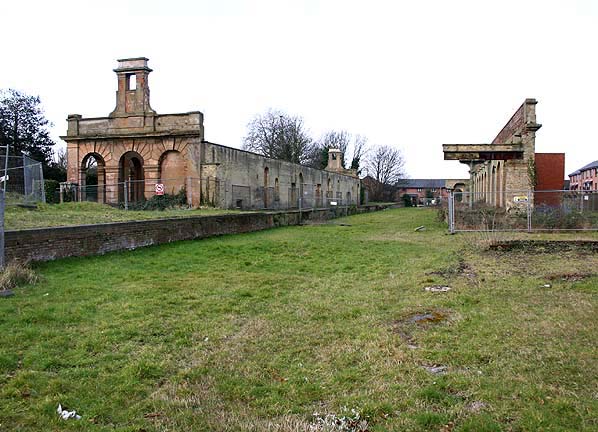| Notes: The terminus was built after considerable negotiation with the Board of Ordnance, which argued that the site, just outside a main gate in the Gosport Lines ramparts, could compromise the Portsmouth Harbour defences. The buildings were designed to be defensible, with surrounding railings and a roof parapet. The terminus was designed by William Tite in |
 |
an Italianate classic tradition
and finished with Tuscan columns with Corinthian capitals
and an overall wood and glass 'trainshed' roof.
From the start, the station was very busy, particularly with the carriage of coal and other freight, and initially was also used for passengers travelling to Portsmouth, a short ferry ride across the harbour. The LSWR also opened a locomotive depot north of the station on the west side of the line in February 1842. This was badly damaged during a bombing raid in 1941 but remained in use until its demolition in 1953.
 |
The station, fronts onto Spring Garden Lane having a masonry wall flanked with railings and a pair of substantial gate posts with wrought iron gates. A stationmaster's house is incorporated into the end of the building. There were two platforms, the south platform was used almost exclusively for passengers and incorporated the booking office, ladies waiting |
room, stationmaster's office, parcels office and telegraph office. The north platform was retained for goods and included a cattle loading dock (resited outside the station in 1900). There was a goods shed and 10-ton crane in the yard on the north side of the station but the shed was demolished in 1922 with all goods being handled within the station.
There were numerous sidings on both side of the line with those on the up side used mainly for coal which accounted for the majority of freight traffic serving 10 local coal merchants. The station also carried ongoing freight traffic to the Isle of Wight. There was also considerable naval and military traffic.
The station was given great impetus during World War I as Gosport's role as Victualler to the Navy increased. There was in influx of supplies to and from Royal Clarence Yard, and also large numbers of troop movements and the transportation of the wounded en route to Haslar Hospital.
 |
After the First World War rail traffic decreased, but with the coming of the World War II the station saw much military activity again, including supplies, hospital trains and trains carrying prisoners of war on their way to a local internment camp. On the night of 10 March 1941 the station received a direct incendiary hit from an aerial attack, the main damage being to the roofing |
which caught alight and collapsed. After the war a new roof was provided consisting of asbestos sheets on a steel framework.
After the war Gosport station's role again diminished. In 1950 there were weekday down trains from Alton and 5 up trains with no Sunday service and a further 4 down trains and 3 up trains from Eastleigh. On 6 June 1953 scheduled passenger services from Gosport ceased. Freight traffic remained until 30 January 1969, but then the station closed to all regular traffic although a private siding remained in use after that date.
| The county council acquired the Grade II* listed station in 1972. Since that time, the council restored the railings along Spring Garden Lane and carried out maintenance of the buildings and grounds. However, the loss of the roof meant the brick and stonework was exposed and the condition of the buildings deteriorated. After remaining derelict for 37 years, |
 |
latterly securely fenced, planning approval was given in 2006 for conversion of the platforms and buildings into a small number of residential properties and offices with the main gate in Spring Garden Lane opened up for vehicle access. This development is for the Guinness Trust was designed by architect Matt Swanton of award winning architects Format Milton Architects (now Re-Format). Work started clearing the site in late 2008 and the development was completed early in 2011.
A few offices being created in the area of the original station managers accommodation with flats in the rest of the main building and residences created on the opposite platform. The area between the platforms is now a ‘common garden’ area for the development. The development comprises
1 - 17 The old Railway and 1 - 12 Lock Terrace.
 |
BRIEF HISTORY OF FAREHAM
- GOSPORT LINE
A railway to Gosport was first promoted in 1836 as part of
a plan by the London and Southampton Railway to connect Portsmouth
to London. There was strong opposition from local residents
to the building of a branch line into Portsmouth for a line
that was destined for Southampton, such was the |
animosity
between the two towns. Instead it was proposed that the line
should be built to Gosport from where there was a short ferry
journey to Portsmouth. The plan was dropped but was revived
two years by the London and South Western Railway (LSWR) who
had taken over the London & Southampton. The proposed
terminus was to be just short of the town centre as Gosport
was a fortified town and the Commanding Officer refused to
allow the walls to be breached to bring the railway closer
to the town centre.
| The line opened on 29th November 1841. Gosport station was first used
by the Royal Family on 8th October 1843 when Prince Albert
arrived at Gosport by train to greet the King Louis - Phillipe
of France. Queen Victoria came to the station six days later
when she accompanied the King on his return to France. The
following year the Queen purchased the Osborne |
 |
Estate on the
Isle of Wight and the Clarence Victualing Yard at Gosport
was her favoured point of departure rather than Portsmouth
or Southampton. Shortly afterwards Prince Albert and the LSWR
agreed to build a 605 yard extension from Gosport through
the ramparts of the Gosport Lines to a new station closer
to the pier; Gosport Clarence Yard Station (also known as
Royal Victoria Station) opened on 13th September 1845.
The railway was very busy in the middle
part of the 19th century, particularly with the carriage of
coal and other freight. However the opening of a direct service
from London to Portsmouth in 1847 began to have a heavy impact
on Gosport. An intermediate station at Brockhurst was opened
on 1st November 1865 to accommodate the troops occupying the
forts at the north end of the town.
By 1900 passenger numbers were in decline due in part to
the competition from street tramways but with the coming of
WW1 rail traffic quickly improved with supplies to and from
the Royal Clarence Yard and large numbers of troop movements
including the transportation of the wounded soldiers to Haslar
Hospital in Gosport.
 |
After the war, the line was again in decline and in 1934
the twin track to Fareham was singled leaving only a passing
loop at Brockhurst; a rubber tyred, petrol engine, rail
bus was introduced in 1937 as a further economy measure. Despite
the lack of passengers, goods traffic on the line remained
heavy and was increasing up to the start of WW2. During the
war the |
branch once again saw increased military activity
including supplies, hospital trains and trains carrying prisoners
of war on their way to the local internment camp. With the
end of the hostilities in 1945 the future of the line was
soon in doubt with closure to passengers coming on 6th June
1953. Freight traffic continued until 30th January 1969 when
final closure came with only the northern section of the line
serving the Royal Naval stores depot at Bedenham being retained;
this remains in use today. The section of line between Fort
Brockhurst and the outskirts of Gosport has now been turned
Further reading: The Railways of Gosport by Kevin Robertson
- Kingfisher 1986
ISBN 0 946184 25 9 (out of print)
Branch
Lines around Gosport by Vic. Mitchell & Keith. Smith
- Middleton Press 1991
ISBN 0 906520 36 3
Some text reproduced from Wikipedia under Creative Commons Licence, Tickets from Michael Stewart
For other stations on the
Fareham - Gosport branch click on the station name: Fareham,
Fort Brockhurst
& Gosport
Clarence Yard
For other stations on the
Lee-on-the-Solent branch click on the station name: Fort
Gomer Halt, Browndown
Halt, Elmore
Halt,
Lee-on-the-Solent
See also the Stokes
Bay and Gosport
Road & Alverstoke
|

4.jpg)
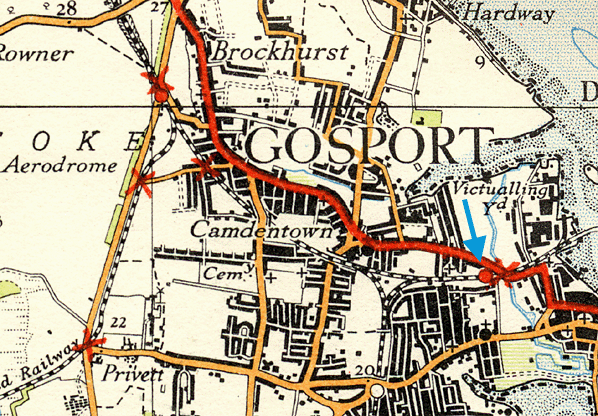
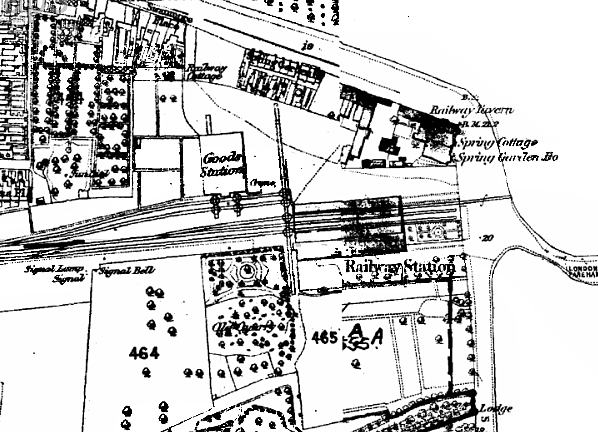
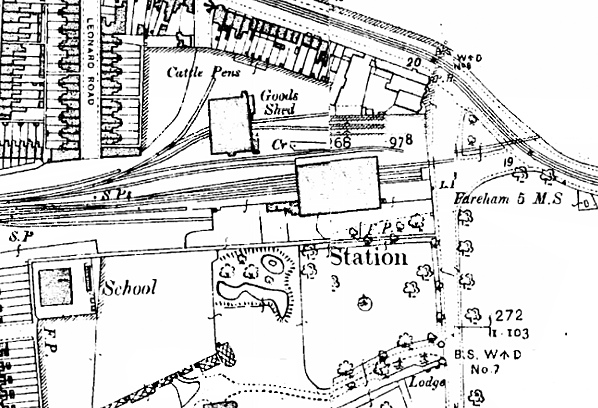
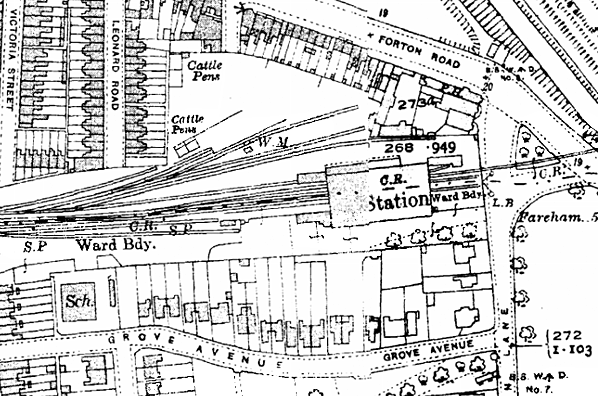
5.jpg)
old23.jpg)
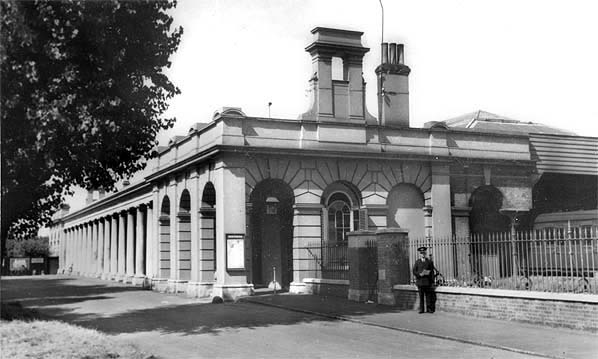
13.jpg)
old19.jpg)
old2.jpg)
40.jpg)
14.jpg)
43.jpg)
51.jpg)
49.jpg)
 Home
Page
Home
Page








old20.jpg)
